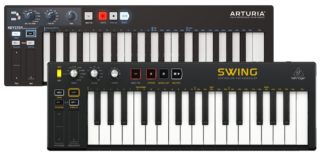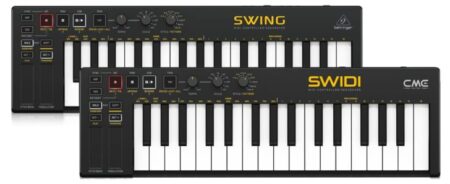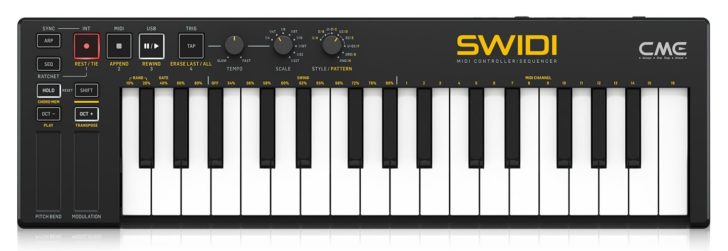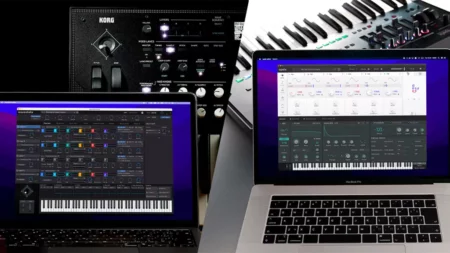CME introduces SWIDI MIDI Keyboard Controller, is “inspired by Behringer ” and says they have ‘ No Component Shortage ’
Behringer gets knocked off by CME, who says they have ‘No Component Shortage’
Can a knockoff of a knockoff be so derivative that it actually becomes something new?
We are used to seeing Behringer taking inspiration from other manufacturers, but other manufacturers taking inspiration from Behringer? That’s not something you hear about so often.
That’s the question raised by CME today, with their introduction of the SWIDI – a wireless MIDI keyboard controller that they say is “inspired by Behringer”.…but that is not the whole story.
Last year, Behringer introduced the SWING, a MIDI keyboard controller that was such a close copy of the Arturia Keystep that Behringer had to defend it on their site.
When Behringer introduced the SWING it closely copied the Arturia Keystep
In their statement, Behringer said that copying other company’s products as closely as legally possible is the core of their ‘market follower’ business strategy, arguing that this type of competition is good for the industry.
Now, the CME SWIDI is being introduced as ‘inspired by’ the Behringer SWING. If you look closely, you may see some similarities between the two products:
You might think that the SWIDI is a clone of the SWING, itself a clone of the Keystep.
Or you might think that the SWIDI can’t be a clone of the SWING, because a copy of a copy is actually, itself, a copy of the original. In other words, CME’s copy validates Behringer’s perspective that copying is good for competition.
Is a knockoff of a knockoff itself just another of the original?
Anyway, CME SWIDI combines a 32-note MIDI keyboard with a 64-step sequencer. It trumps both SWING and KeyStep by offering Bluetooth MIDI, and its compatibility with CME’s WIDI technology means that SWIDI can be used to control up to four peripherals wirelessly. You can also create up to four MIDI configurations.
Key Features:
- 64-step sequencer, with support for 8-note polyphony.
- Connects wirelessly to up to four peripherals. For legacy MIDI hardware, CME also offers a MIDI-powered Bluetooth adapter.
- 3ms latency between WIDI equipped devices
- 65ft / 20m plain sight range between WIDI equipped devices
- Add up to five (5) Bluetooth MIDI devices with group auto-learn
- You can optimize for latency or jitter performance via WIDI App (iOS/Android)
- Wireless charging. You can power & play the SWIDI on its charging station for eight hours of wireless use.
CME says that there’s “no component shortage” to delay production of the SWIDI, and that it will be priced 20% less than the Behringer SWING.
The CME SWIDI will be available May 2, 2022, priced at $€ 79.







